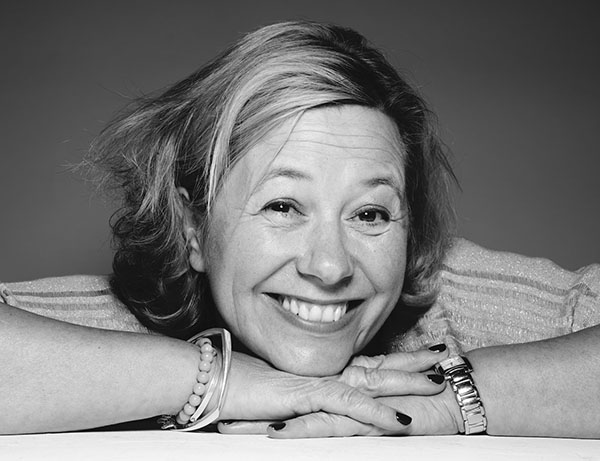News - Advertising
Nina Jasinski on Ogilvy’s growth
by Mark Tungate
July 5, 2021
.jpg) Advertisement
AdvertisementNina Jasinski, Global MD New Business & Chief Marketing Officer UK at Ogilvy discusses the agency’s growth
For a couple of years now you’ve combined the role of Chief Marketing Officer UK with Global MD New Business. How do you manage such diverse responsibilities?
It’s certainly busy, let’s put it that way! The first thing to say is that we’ve got established teams working with me on both sides of the role. For example, in the UK there is a large and established team, run by Jane Douglas, so I work closely with her and dive in when needed on critical issues, strategy and leveraging my existing stakeholder relationships. Since the arrival of Andy Main [as CEO of Ogilvy in July 2020] I’ve been even more focused on the global part of my role, which is about making sure we have all the elements of great customer experience in place from the perspective of a client who’s looking to hire an agency. Andy has a forensic focus on growth and I’m helping bring his vision to life.
You must be aided by the fact that Ogilvy is such a resonant brand? Even people who don’t work in advertising have heard of it.
It’s great to have such a famous brand but we also have to make sure people know what we do now. To make sure they haven’t pigeonholed us. We believe that we can drive growth for clients better than anyone else by harnessing borderless creativity – so much of what we in the growth team across the network are doing is reframing ourselves and making sure people understand the depth and breadth of talent we have in Ogilvy. A few people might think that we’re “just” an advertising agency – which we’re certainly not. We have a business that spans five core areas: Experience; Health; Growth & Innovation (our consulting offering); PR & Influence and Advertising Brand and Content. Of course, we still do advertising, we’re not in denial about that, but we don’t want to be defined by only a part of what we do.
I noted that you’re a keen proponent of diversity and gender equity. How do you use your role in the agency to influence positive change on those fronts?
I’ve been really lucky in my career to have worked with some amazing women, all of whom were always happy to reach down and help other women up the ladder. I wanted to continue in that spirit, so I love mentoring younger women coming into our industry, or returning mothers – which obviously I’ve had experience of – or generally addressing diversity wherever I can, both here at Ogilvy and more broadly within the industry through WACL [Women’s Advertising Communication Leadership].
Additionally, in my new business role, an important aspect is how we cast the teams: making sure that we’re always ensuring diversity when we’re putting together teams. It’s something I feel we all want, and there’s an equal push from clients as well as from us. So I’m far from a lone voice…It’s getting better and better, although there’s always more to be done.
The yin to the yang of new business is reputation – and that reputation is fuelled in part by PR and social channels.
Where does “new business” typically come from today? Do consultants still play a big role?
It’s a complex scenario these days – so we are managing our own omnichannel environment. Consultants still play a big role, but a great deal of new business hinges on your reputation, from the people who work for you (and who they know) to the standard of your work. A potential new client might say: “I love Mouldy Whopper, I want some of that.” Or “I love the Milka work, get me that agency.” They might appreciate our borderless creativity model, or they may have read about how we approached a brief differently. On the other hand, many clients come to us because they’ve worked with us in the past and want to continue a relationship, even though they’re at a new brand. But as I said, pitch consultants are still super important – in fact we just did the latest AdForum Summit, which was very well received. And finally we’ll also get direct approaches thanks to our website and the other social channels that form our “shop window”.
It’s also not just about winning new clients – but developing new business from existing clients is vital. Andy talked at the Summit about identifying “white space” for our clients that can be areas of pure growth for them. So the key is managing all the potential sources of new business.
I want to come back to that word “reputation”, because I’ve noticed since embarking on this series that quite a few new business people seem to come from a PR background.
There are really two parts. If you take the chief growth officer or the CMO role in any agency, at the centre of that role is going to be new business. But the yin to the yang of new business is reputation – and that reputation is fuelled in part by PR and social channels. We’ve seen huge growth on LinkedIn, Twitter and Instagram – in fact I think we’re now the biggest agency on all three platforms. They play different roles, but they all add up to a major support for the brand.
What’s the most challenging aspect of the new business role? And how has the pandemic impacted that?
I think the most challenging part is managing your energy. New business is my true passion and it’s exciting and exhilarating, but it can also be a brutal process – because the timings are always tight and agency resources are not infinite. Winning really is the only thing that matters, but how we get there is as important as the result. Bringing teams with you and looking after people’s mental health is vital.
The pandemic has made the process of new business slightly longer, I think – as clients struggle to get together at key points with decisions, so we are seeing a slightly longer overall lead time on pitches. And of course, like others we have got completely used to pitching virtually.
Is there a new business people’s support group for when you’re feeling low?
Well, we all know each other, so we can get on the phone. But don’t forget, at an agency new business is everyone’s business, so you’re going through it all with a whole team of people. And when you win, you’re all hitting that high together. That’s why I do it, because it’s genuinely exciting. Yes, you’re staying up late and eating bad food and all the rest of it – but then it’s show time, and you can feel the electricity. At the end you come out and say: “We smashed it! Back of the net!” It’s an amazing feeling. Who wouldn’t want to be part of that?
New business is my true passion and it’s exciting and exhilarating, but it can also be a brutal process – because the timings are always tight and agency resources are not infinite.
I’ve noticed that the role does seem to attract a certain type of person, possibly addicted to adrenaline.
You may be right! Energy and the thrill of the chase are core. But part of that energy and passion comes from the interaction with the client – and the problem with Covid is that it put a screen between us. In fact if there’s one thing I’d like to say, hoping clients might read it, it’s that when you’re in that scenario, please ask your team to turn their cameras on. Because some of them don’t. And then the connection really is missing.
On the positive side, we talk about borderless creativity – and now we can literally pull a team together from all around the world, because everyone’s going to be virtual. You don’t get that awkward “half in the room and half virtual” mix that you sometimes got before.
At what stage do the creative team typically get involved in the new business process at Ogilvy? Every network seems to have a different opinion on when to start weighing in with the big ideas.
It varies, but in general creative teams are part of the core team from the very beginning. We’ll always have a creative leader as one of the core members, because otherwise they’d miss the small things that get said at the very start. And our business is driven by creativity – so why wouldn’t you have a creative leader involved at the get-go?
What are your tips for managing the different personalities involved in pitches?
Casting, as I’ve said, is everything. It’s such an important aspect of new business. Yes, it requires diversity and a thoughtful approach to that. But it’s also about who works well with who, and which talent complements another person. You absolutely have to think about how people will gel together. (Or even if they’re roughly in the same time zone – maybe don’t regularly put Los Angeles with France, for instance.) Aside from that, I think it’s a case of addressing issues if they appear. Is there is a problem, how do we solve it? We’re all grownups. But in general, you can avoid that by knowing how to create a complementary team from the start.
This interview has been published first on the Epica website



.jpg)


.jpg)




